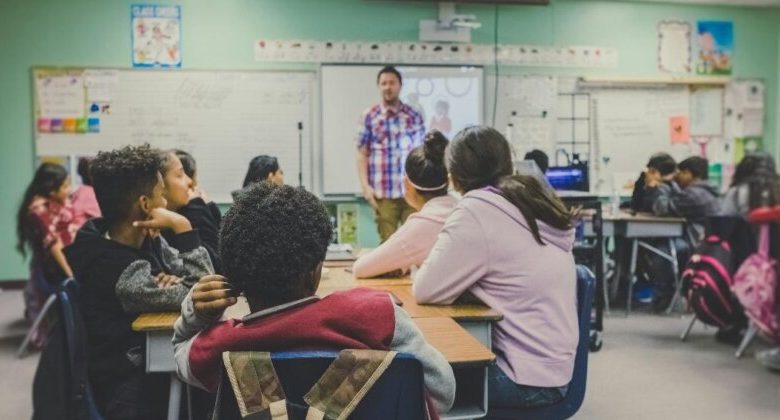Tips for Keeping the Classroom Dynamic


Active learning has become increasingly important in today’s classrooms, where traditional lecture-based teaching may no longer capture students’ attention or meet their diverse learning needs.
To maintain a dynamic classroom environment, it is crucial to explore methods that encourage students to engage deeply with the material.
This article offers practical tips on how educators can keep their classrooms dynamic and interactive, promoting a culture of participation and active learning.
The Role of Higher Education in Promoting Active Learning
In any learning environment, the foundation of effective teaching begins with a solid understanding of educational principles. For educators aiming to create dynamic classrooms, pursuing higher education can be vital in equipping themselves with advanced strategies and techniques tailored for modern students.
Higher education programs, especially those focused on education specialization, delve into innovative teachings that place students at the center of learning. This shift from teacher-centered to learner-centered education is at the heart of active learning.
One of the key advantages of pursuing an education specialist degree is the opportunity to gain specialized knowledge and tools that are directly applicable to real classroom scenarios. Educators enrolled in such programs can explore evidence-based practices that foster active participation, including group discussions, problem-solving tasks, and hands-on activities. These strategies keep students engaged and help them retain knowledge more effectively. That’s not all; online programs allow educators to learn at their own pace while balancing their professional responsibilities, making it easier to integrate new concepts and methods into their teaching practice.
Educators who prioritize continuous learning are more likely to adopt methods that adapt to the ever-evolving needs of their students. By staying informed about the latest educational trends and advancements, they can create dynamic and flexible learning environments that keep students motivated.
Pursuing an online education specialist degree, for instance, offers an in-depth exploration of how to design and implement activities that stimulate critical thinking, collaboration, and independent learning.
Designing Interactive Lessons for Maximum Engagement
One of the most effective ways to keep a classroom dynamic is through carefully designed lessons that prioritize interactivity. Interactive lessons shift the focus from passive listening to active participation, encouraging students to engage directly with the material.
Techniques such as cooperative learning, where students work together to achieve common goals, can create a lively and supportive atmosphere. Group activities, debates, and peer teaching are just a few examples of how lessons can be designed to involve students actively.
Another method to boost engagement is by incorporating technology. Digital tools and platforms allow educators to create interactive quizzes, gamified learning experiences, and real-time polling to check understanding. Using multimedia elements, such as videos and infographics, can also help maintain student interest and make abstract concepts more accessible.
Additionally, these tools allow educators to provide instant feedback, which is crucial for active learning as it helps students recognize areas that need improvement.
A well-structured interactive lesson includes opportunities for both individual reflection and group collaboration. By striking a balance between these components, educators can cater to different learning styles and preferences, making sure that all students have a chance to participate.
Encouraging Collaborative Learning Environments
Collaborative learning is an essential aspect of keeping classrooms dynamic. When students work together, they exchange ideas, challenge each other’s thinking, and build a deeper understanding of the subject matter. Creating a collaborative environment involves more than just assigning group tasks; it requires a supportive culture where students feel comfortable sharing their thoughts and taking risks.
One approach to fostering collaboration is through project-based learning (PBL). PBL allows students to work together on meaningful projects that address real-world problems. This approach builds academic skills and enhances teamwork, communication, and problem-solving abilities.
By working on a project from start to finish, students develop ownership of their learning and feel more invested in the outcome.
Effective collaboration also relies on clear communication and well-defined roles within groups. Educators should guide students in setting group norms and expectations while offering strategies for resolving conflicts.
Encouraging students to take on different roles, such as facilitator, researcher, or presenter, can enhance their leadership skills and make sure that everyone contributes to the group’s success.
To sustain collaboration, educators should regularly check in with groups and offer constructive feedback. Reflective discussions after collaborative activities can help students evaluate their performance and identify areas for improvement.
Incorporating Hands-On Activities and Experiential Learning
Hands-on activities and experiential learning are powerful ways to keep the classroom dynamic and engaging. These approaches involve students in direct experiences that relate to the concepts being taught, allowing them to learn by doing. For example, science experiments, role-playing simulations, and art projects can make learning more tangible and memorable.
Experiential learning encourages students to apply what they have learned in real-world situations, which helps reinforce their understanding. Field trips, internships, and community service projects are excellent ways to extend learning beyond the classroom and give students practical experience in their field of study.
By connecting theoretical knowledge to real-world applications, experiential learning bridges the gap between abstract concepts and everyday life.
In addition to being highly engaging, hands-on activities cater to diverse learning styles. For kinesthetic learners, who learn best by doing, these activities provide an opportunity to grasp concepts more effectively.
Visual and auditory learners can also benefit from the multi-sensory nature of experiential learning. By incorporating a variety of hands-on experiences, educators can create a classroom environment where all students can thrive.
To maximize the effectiveness of hands-on learning, educators should debrief with students after activities, allowing them to reflect on what they have learned and how they can apply it in future scenarios.
Promoting Active Participation Through Questioning and Discussion
One of the simplest yet most effective ways to engage students is by fostering an environment of open questioning and discussion. Encouraging students to ask questions and participate in discussions keeps them engaged and develops their critical thinking skills.
Effective questioning techniques, such as open-ended questions and Socratic questioning, can stimulate deeper analysis and promote active learning.
Discussions can be held in various formats, including whole-class debates, small-group discussions, and think-pair-share activities. The key is to create a safe space where students feel comfortable expressing their ideas without fear of judgment.
Educators can set the tone by modeling respectful dialogue and guiding discussions in a way that includes diverse perspectives.
Active participation in discussions also involves listening and responding thoughtfully to others. Educators can encourage students to build on each other’s ideas, challenge assumptions, and explore alternative viewpoints.
This keeps the conversation dynamic and also enhances students’ ability to communicate effectively and think critically.
To maintain momentum in discussions, it’s essential to keep the topics relevant and connected to students’ interests. Relating classroom content to current events or real-world issues can spark lively debates and encourage students to think about how their learning applies outside the classroom.
By promoting active participation, educators create a vibrant and dynamic learning environment where students are fully engaged in the educational process.




